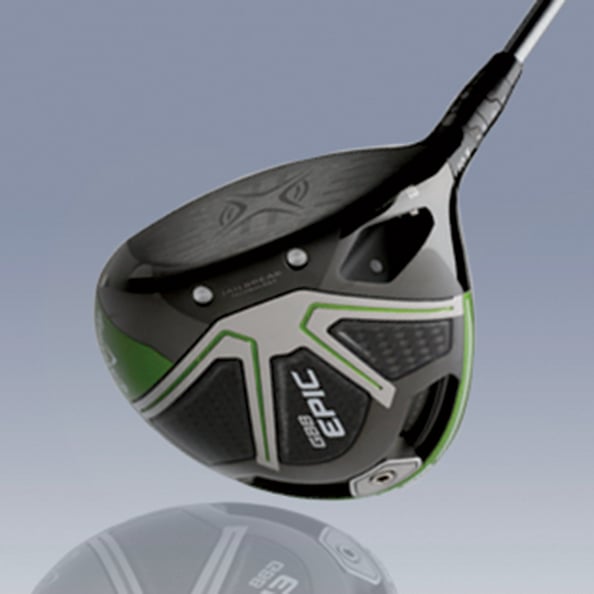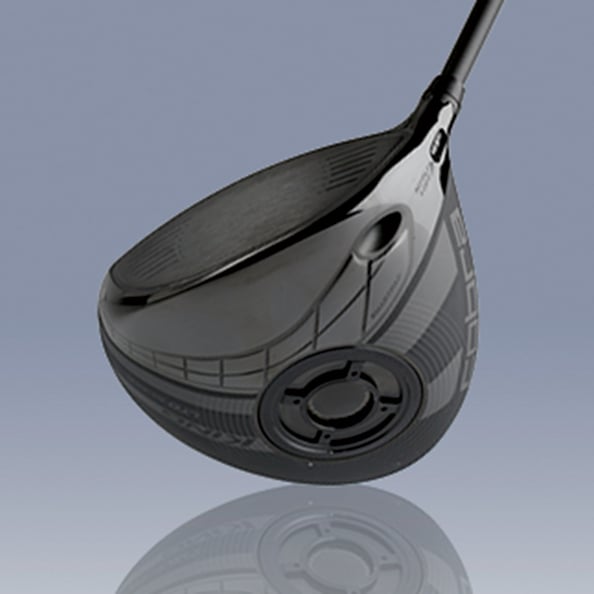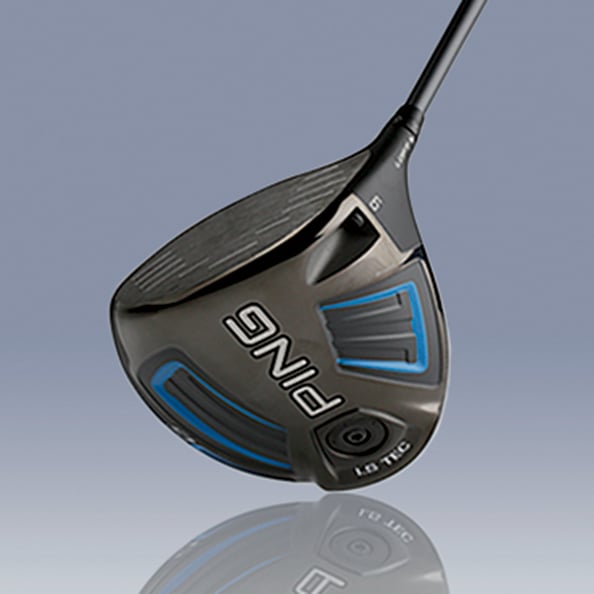Thirty-three thousand, give or take a small bucket.
That’s how many golf balls our players hit this year at the annual Hot List Summit at The Wigwam in Litchfield Park, Arizona. Giving all the latest golf clubs the once, twice and thrice-over is only part of our process, which featured Foresight Sports GC2 launch monitors at every hitting station. The analysis and feedback from our testers provided the basis for our scores in Performance (45 percent of the total score) and Look/Sound/Feel (20 percent). Intense deliberations with our technical panel informed our score in Innovation (30 percent), and our industry review by our panel of golf retailers gave us the information for the Demand score (5 percent). All of these contributions, plus weeks of scrutiny by the judges, form the Golf Digest Hot List, our uncensored guide for all the equipment that can change your game this year and for years to come. Products that earn 93 points or more are awarded Gold medals; a score of 88 to 92.99 earns a Silver. But don’t be confused by the 105 products that made this year’s Hot List and think this is like youth soccer where everyone gets a trophy: nearly 40 percent of the products submitted for Hot List consideration failed to earn a medal. We’ve done our work to get you an informed start on your next equipment purchase, something we believe strongly should involve a clubfitting. Chances are you’ll discover exactly what our panellists found this year. As one veteran said after a long day hitting hundreds of balls: “Just incredible. There are so many excellent clubs out there, and a few that are truly exceptional.”Your quest starts here with our 2017 Hot List: Drivers…
Callaway
Big Bertha Fusion
Performance ★★★★ ½
Innovation ★★★★ ½
Look / sound / feel ★★★★
Demand ★★★ ½

VERDICT The key to making an easy-to-hit driver is finding ways to mix lighter materials with heavier ones. The weight saved can be moved to the perimeter for better forgiveness. Callaway has done that with a driver whose shape comprises multiple pieces of light carbon composite, including a crown made from a material that’s 65-percent lighter than titanium. In fact, aside from the flexible titanium face, the driver’s body is skeletal sections of titanium connected by carbon-composite panels. It makes for the most stable driver in Callaway’s history. Need more help? A 44½-inch version (one inch shorter than standard) is also available.
COMMENTS (L) The construction is unorthodox, but I quickly forgot about that thanks to the elusive combo of straight and long. (M) The numbers I get on the launch monitor are consistent no matter where I hit it on the face. (H) Soft impact, but the ball still jumps off the face.
Callaway
GBB Epic/Sub Zero
Performance ★★★★★
Innovation ★★★★★
Look / sound / feel ★★★★★
Demand ★★★★ ½


VERDICT Callaway believes a flexible face isn’t enough. Adding structural stability allows the face to be thinner and concentrates that flexing across a wider area. So inside the head, two bars stretch from the crown to the sole. The extra stability makes for a face that’s 20 percent thinner and more flexible than before. The two models use a titanium frame with carbon-composite panels above and below. The standard version offers a sliding rear weight to address slices and hooks, and the Sub Zero’s two weights optimise ball spin. It’s Callaway’s most intriguing driver in two decades. Fourteen of our 16 testers put this club in their top five.
COMMENTS (L) It’s easily the most consistent driver, a controlled explosion at impact. (M) The adjustability is intuitive. (H) Looks badass. Power was colossal. Sound is muted, but there’s a strong carbon-fibre punch.
Cobra
King F7/F7+
Performance ★★★★★
Innovation ★★★★ ½
Look / sound / feel ★★★★ ½
Demand ★★★ ½


VERDICT These two drivers – the oversize F7 and the compact, better-player-focused F7+ – mix easy adjustability with complex internal technologies. Making them easier to fit to your specs, both come in only one head that adjusts across a range of lofts (9 to 12 degrees on the F7; 8 to 11 degrees on the F7+). Even better, those loft changes are clearly revealed in a window on the hosel. And no less complicated are the adjustable weights that fit in three simple ports to tweak shots higher, lower or with less slice.
COMMENTS (L) The F7+ sets up neutral and doesn’t look hooked at all, which is nice. I love the neutral shape. It’s even more forgiving than it looks. (M) I love the deep face, the finish, the way it sets up square at address and the beautiful thud it makes at impact. (H) Adjusting the weights doesn’t seem like it would do a whole lot, but it made a huge difference in carry and how far my mis-hits went.
Cobra
King LTD Black
Performance ★★★★ ½
Innovation ★★★★ ½
Look / sound / feel ★★★★
Demand ★★ ½

VERDICT Last year’s model gets a matte-black cosmetic upgrade, but you can tell the guts haven’t changed because there’s still a see-through port in the sole. Not just for show, its 16 grams of weight pushes the club’s centre of gravity lower to align with the centre of the face. That makes for maximum energy transfer into the ball with less spin. A lightweight carbon-composite crown allows for 12 grams of tungsten deep in the sole to help this classically shaped head play more forgiving than it looks.
COMMENTS (L) The face feels great, unique – hard hit, soft feel. They’re so good with making stuff look cool and hiding the adjustability. (M) A great home-run-off-the-bat feel. Very forgiving as well. (H) Easy to swing. At every point, I felt in control.
Ping
G/LS TEC/SF TEC
Performance ★★★★ ½
Innovation ★★★★ ½
Look / sound / feel ★★★★
Demand ★★★★ ½



VERDICT All three models (the neutral G, the anti-slice SF Tec and the low-spin LS Tec) are big drivers, but they also have little features that make them play large. Touches like a thin crown modelled on a dragonfly’s wings save weight that’s pushed low and deep for less spin and more forgiveness. Details like the curves on those crown ridges and the depression in back help streamline airflow. There are even attributes to fit certain players. The LS Tec’s weighting is slightly more forward for less spin, and the SF Tec’s heel weighting combats a slice. But for all those details, believe in the big: these are Ping’s most stable drivers ever.
COMMENTS (L) I didn’t have to make a great swing to put it in play. (M) Easy to launch with terrific speed and forgiveness. Great correction. (H) The forgiveness fuels your confidence to go after it.
TaylorMade
M1 (2017)
Performance ★★★★★
Innovation ★★★★★
Look / sound / feel ★★★★★
Demand ★★★★ ½

VERDICT The second generation of golf’s most adjustable driver might look like the original – with its T-track of sliding weights that tweak shots vertically and horizontally. But look again. Always a force in our Innovation category, there’s now a lighter titanium alloy in the body, and half the sole and most of the crown is weight-saving carbon composite. All this means TaylorMade can position more mass low and deep so mis-hits lose less speed, and all shots launch with less spin. The centre track now extends almost a half-inch longer and with a heavier weight. The result is nearly 5,800 settings on each head, 132 percent more than last year.
COMMENTS (L) They make a big head look smaller. Mis-hits were good, and the launch monitor showed high launch with good spin. (M) A less-than-quality swing still gets a good result. It’s easy to launch the ball high.
(H) With the weight back, it’s hard to miss. One of those shut-up-and-take-my-money clubs.
TaylorMade
M2/M2 D-TYPE (2017)
Performance ★★★★ ½
Innovation ★★★★
Look / sound / feel ★★★★ ½
Demand ★★★★★

VERDICT Bad things can happen with ultra-forgiving drivers. Either they look and sound hollow and cheap, or worse, by pushing weight to the extremes, the centre of gravity relocates upward, resulting in too much ball spin. M2 combats those problems with a weight-saving, carbon-composite crown on top and a reconfigured internal geometry. This provides forgiveness and keeps the CG low. Meanwhile, more curvature on the sole (note the overhang where the crown and sole meet) helps mellow the sound. Of course, they didn’t forget about power: a sleeker slot in the sole deflects three times as much as before.
COMMENTS (L) I love the size: It’s huge but not so big that it’s bulky. Just confidence-inspiring. Good ball speed. (M) Elastic off the face like a well-strung tennis racquet. (H) I like the two-tone, and the carbon composite is visible but not intrusive. Nice, solid, smash at impact.
Titleist
917D2
Performance ★★★★★
Innovation ★★★★ ½
Look / sound / feel ★★★★★
Demand ★★★★

917D3
Performance ★★★★★
Innovation ★★★★ ½
Look / sound / feel ★★★★★
Demand ★★★★

VERDICT A driver with moveable weight is almost as common nowadays as a tour player with a logo on the sleeve. But the weight slug on the sole here is different. The cylinder comes in two forms: a neutral version and a top-heavy version. The neutral version keeps the weight low and deep to maximise forgiveness. The top-heavy version keeps that weight back, but it can be flipped so there’s more mass towards the heel or toe to control direction. Best of all, the 917 drivers accomplish this weighting jujitsu without touching the classic look, sound and feel of a Titleist driver.
COMMENTS (L) The face feels responsive and stable. (M) I like the greyish colour. This driver goes back to the old, crisp, pleasing sound at impact. The trajectory doesn’t balloon, and off-centre hits aren’t punitive. (H) I love the classic shape of a Titleist driver. The weighting options helped get me to a good spot, so I think working with a qualified fitter is important. The easier I swung, the more the technology seemed to help me.
Mizuno
JPX 900
Performance ★★★★
Innovation ★★★★ ½
Look / sound / feel ★★★★
Demand ★★

VERDICT Mizuno’s boldest step in adjustability has – in theory – infinite settings. Besides an adjustable hosel, there are two weight chips that fit in three spots. You can address a slice or hook by putting weight in the heel or toe slots, but the real plus is the centre-weight track that fits in one or both weights to tweak spin and launch angle. Furthermore, a sliding chip on the sole lets you dial in your preferred face angle at address. Dizzying perhaps, but the new face design forgives mis-hits, too.
COMMENTS (L) The size and shape are confidence-inspiring at address. (M) I found it easy to find the centre of the face. (H) The blue is calming. It gave me a swing mind-set instead of a hit mind-set.
Srixon
Z 565/Z 765
Performance ★★★★
Innovation ★★★★
Look / sound / feel ★★★★
Demand ★★


VERDICT Sometimes you can make the face more flexible by looking beyond the part of the club that actually hits the ball. That’s why the full-size, higher-launching, slightly draw-bias 565 and the compact, mid-launching 765 use a face design that wraps deeper around the crown and sole for better off-centre-hit performance. Both help even worse hits through a stepped sole design. This structure deforms at impact and springs forward to contribute to the flexing of the face. It also stores weight low and deep for better stability. The result is two drivers that play more forgiving than they look.
COMMENTS (L) There’s nothing wrong with its basic looks, especially when you’re splitting the fairway all day long. Every hit felt and sounded like I flushed it. (M) Simple adjustability in a clean, tight look. I was surprised by the pop it delivers. (H) Here’s a less-is-more approach. I always felt like I was in control. It’s a very comfortable driver to swing.
Wilson
D300
Performance ★★★★
Innovation ★★★★
Look / sound / feel ★★★★
Demand ★★ ½

VERDICT Wilson is doing everything to help the club move faster. First, at 268 grams, it’s the lightest driver on the market by a major brand – about a pack of Skittles lighter than most drivers in the game. Next, designers modified the curvature in the sole, rear and front of the crown (compared to the D200) to reduce its aerodynamic drag. Finally, and most noticeably, pyramid-shape nodules on the top of the club streamline airflow around the crown and hosel. The ultimate intent of this lighter, sleeker shape? To let your same old swing produce new and faster results.
COMMENTS (L) Whatever those things are on top, I’m a believer. I love the way it sits square and lets you go after it. (M) Everything felt light, liberating and easy to swing. You can forgive the bumps on top. (H) If those spikes help with aerodynamics, I’ll suffer with it. Easy to launch high.
(L) Low-Handicapper | (M) Mid-Handicapper | (H) High-Handicapper

